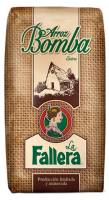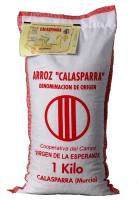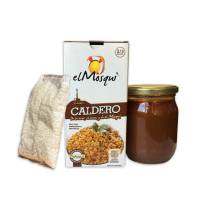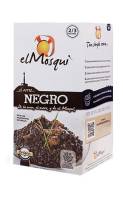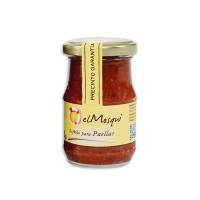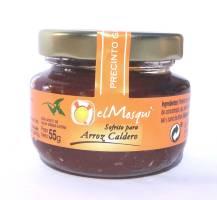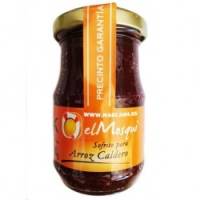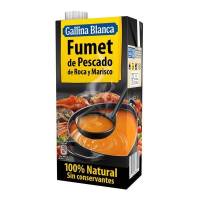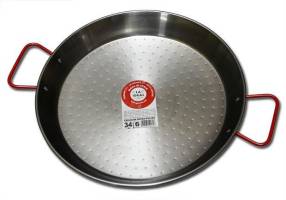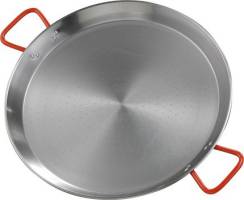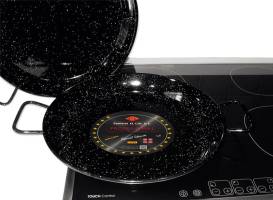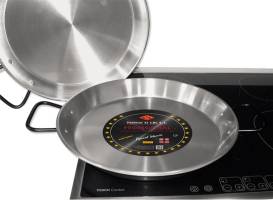At first glance, they might look similar, but their differences are significant, both in the cooking process and the final result. In this article, we explain the differences between bomba rice and round rice, when to use each, and what common mistakes to avoid if you want to get it right.
What is round rice?
Round rice is the most common type used in everyday Spanish cooking. It’s a short, round, white grain mainly grown in regions such as Valencia, Murcia, the Ebro Delta, or La Albufera. It’s the kind of rice our grandmothers probably used for almost everything: paella, rice pudding, soups, stews...
Properties of round rice
-
Great flavor absorption: Its porous texture allows it to soak up broths and seasonings well.
-
Cooking time: It typically cooks in 15–18 minutes.
-
Affordable price: It's more budget-friendly than bomba rice, which is why it's often used for daily meals.
What is bomba rice?
Bomba rice, on the other hand, is widely considered the king of paella rice. It’s grown in very specific areas like Calasparra (Murcia) and La Albufera (Valencia), and is protected by designations of origin like Arroz de Calasparra and Arroz de Valencia.
Properties of bomba rice
-
High liquid absorption: It can absorb up to three times its volume in liquid, compared to the 2–2.5x absorption rate of round rice.
-
Firm, separate grains: Even when absorbing more liquid, it doesn’t overcook or break apart, maintaining its structure during long cooking times.
-
Longer cooking time: It takes around 18–20 minutes or more, depending on the broth.
-
Higher cost: It’s more expensive, but also more consistent in performance.
Key differences between bomba rice and round rice
| Characteristic | Round Rice | Bomba Rice |
|---|---|---|
| Grain size | Short and round | Shorter, smaller, firmer |
| Liquid absorption | 2 to 2.5 times its volume | Up to 3 times its volume |
| Texture after cooking | Can become mushy | Always stays separate |
| Cooking time | 15–18 minutes | 18–20 minutes or more |
| Price | More affordable | More expensive |
| Recommended uses | Soupy dishes, desserts, broths | Paella, baked rice, fideuá |
When to use bomba rice and when to use round rice
Use bomba rice if:
-
You’re making an authentic Valencian paella, baked rice, or a dry rice dish.
-
You want the grains to remain firm and separate.
-
You’re aiming for a more professional result or cooking for guests.
Use round rice if:
-
You’re preparing a brothy rice, rice pudding, or a rice soup.
-
You prefer a creamy or slightly sticky texture.
-
You need a more economical or quicker-cooking option for everyday meals.
Can they be used interchangeably?
Technically, yes, but it’s not ideal. Switching one for the other without adjusting broth quantities or cooking times can ruin your dish. Round rice doesn't hold up well to long cooking times and can break down or become mushy. Bomba rice, on the other hand, requires more liquid—if you use the same amount as for round rice, it may turn out hard or underflavored.
Common mistakes when cooking with bomba or round rice
1. Using bomba rice with too little broth
This is one of the most frequent mistakes. Since bomba absorbs more liquid, it needs more broth. If you use the same amount as you would for round rice, it will turn out undercooked and bland.
To avoid this, add 3 to 3.5 parts of broth for each part of bomba rice.
2. Using round rice in dry dishes without heat control
Round rice overcooks easily if there’s too much liquid or if it cooks for too long.
Only use round rice if you’re confident about managing heat and timing. If not, go with bomba.
3. Confusing round rice with long grain rice
Although both are white, long grain rice (like basmati or jasmine) is nothing like round or bomba rice. It doesn’t absorb flavor the same way and isn’t suitable for traditional Spanish dishes.
Please avoid using long grain rice for paella, brothy rice, or any classic Spanish recipe.
Types of rice that don’t work in Spanish dishes
At www.yourspanishcorner.com we offer a wide variety of traditional Spanish rice, but it’s important to know which ones to avoid if you want to stay true to the recipes.
Basmati or jasmine rice
Perfect for Asian dishes or as a side, but they don’t absorb broth well and are far too loose for a proper paella or creamy rice dish.
Parboiled (precooked) rice
While it doesn’t overcook, it also doesn’t absorb flavor like bomba or round rice. It’s useful for salads or prepping meals in advance, but not ideal for traditional dishes.
Brown rice
Healthier, yes, but much firmer and with a taste that clashes in dishes like arroz a banda, paella, or rabbit rice. It requires more time and more liquid.
Where to buy high-quality bomba and round rice
At www.yourspanishcorner.com you can find both bomba rice and round rice from traditional Spanish brands like La Fallera, Arroz Embajador, or Calasparra rice—perfect for recreating your favorite dishes just like at home. You can also pair them with all the authentic ingredients: paella broth, ñoras, peppers, ready-made sofritos, and more.
Choosing between bomba and round rice is no small matter: it can make the difference between an unforgettable paella and a forgettable dish. Each has its place and moment, and understanding their characteristics will help you make the right call in every recipe.
If you want to enjoy the true taste of Spanish cuisine at home, go for quality ingredients—and above all, choose the right rice. And if you’re not sure where to begin, at www.yourspanishcorner.com we make it easy: quality, variety, and fast delivery straight to your door across Europe.

